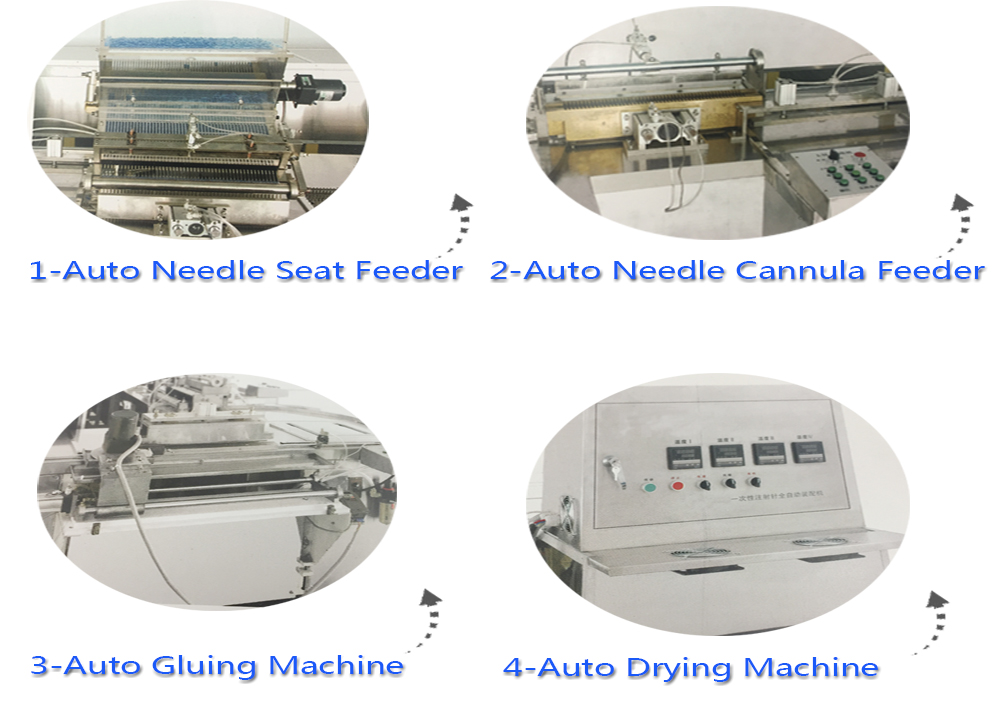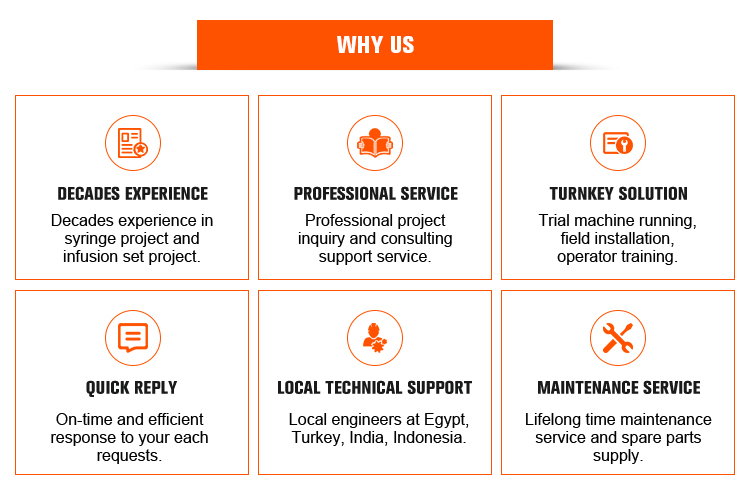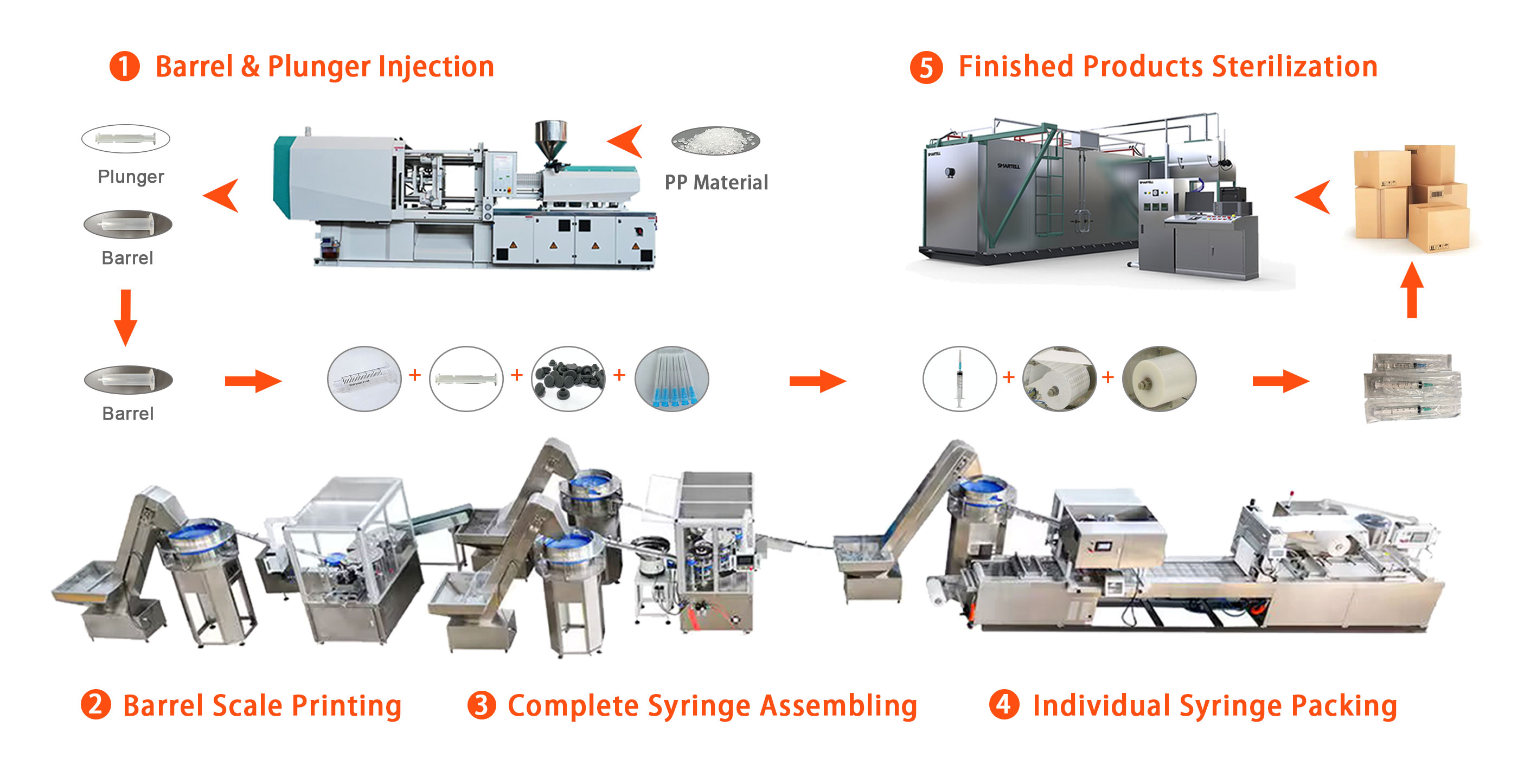| Availability: | |
|---|---|
| Quantity: | |
SMT-3104
Smartell








Basic Parameter
Capacity | 60,000pcs per hour (for master) |
Operation of worker | 1 inspector |
Extra air pressure | ≥0.60Mpa |
Extra airflow | ≥300ml/min |
Power supply | 380V * 50Hz*15Kw*3P+N+PE |
8Kw for Normal working time | |
14Kw for working after half an hour | |
Dimension | 7m(L)*3.4m(W)*1.6m(H) |
Weight | 3ton |
All parameters and dimensions are subject to change without prior notice.








Basic Parameter
Capacity | 60,000pcs per hour (for master) |
Operation of worker | 1 inspector |
Extra air pressure | ≥0.60Mpa |
Extra airflow | ≥300ml/min |
Power supply | 380V * 50Hz*15Kw*3P+N+PE |
8Kw for Normal working time | |
14Kw for working after half an hour | |
Dimension | 7m(L)*3.4m(W)*1.6m(H) |
Weight | 3ton |
All parameters and dimensions are subject to change without prior notice.
1. Silicone Oil Filling and Blockage Tester
Silicone oil is often used to lubricate the needle cannula to ensure smooth insertion and prevent damage. The silicone oil filling and blockage tester ensures that the appropriate amount of silicone oil is applied to each needle and checks for any potential blockages in the needle tube.
Function: Adds the correct amount of silicone oil and tests for blockages or irregularities in the needle.
Advantages: Ensures smooth operation of the needle, reducing the risk of injury or malfunction during medical procedures.
2. Auto Needle Cap Feeder
The auto needle cap feeder automatically feeds the protective needle caps onto the assembled needles. These caps are critical for preventing contamination and ensuring the safety of the needle before it is used in medical procedures.
Function: Accurately places and secures the needle cap on the assembled needle.
Advantages: Reduces the risk of contamination and human error in cap placement.
3. Auto Cap Pressing and Blanking Machine
After the cap is fed into place, the auto cap pressing and blanking machine applies pressure to ensure the cap is securely attached to the needle. It also blanks or trims any excess material from the cap, ensuring the needle is neatly finished and ready for packaging.
Function: Secures the cap in place and trims excess material.
Advantages: Ensures proper cap attachment and a clean, polished final product.
Needle assembly machines have evolved dramatically, driven by advances in automation and precision engineering. The ability to integrate precise, automated components has transformed the industry. With features such as auto feeders, gluing machines, drying systems, and silicone oil testers, modern needle assembly machines provide unparalleled efficiency, consistency, and precision in needle production. As the demand for medical devices continues to grow, these machines will remain essential to meeting the challenges of the global healthcare sector.

1. Silicone Oil Filling and Blockage Tester
Silicone oil is often used to lubricate the needle cannula to ensure smooth insertion and prevent damage. The silicone oil filling and blockage tester ensures that the appropriate amount of silicone oil is applied to each needle and checks for any potential blockages in the needle tube.
Function: Adds the correct amount of silicone oil and tests for blockages or irregularities in the needle.
Advantages: Ensures smooth operation of the needle, reducing the risk of injury or malfunction during medical procedures.
2. Auto Needle Cap Feeder
The auto needle cap feeder automatically feeds the protective needle caps onto the assembled needles. These caps are critical for preventing contamination and ensuring the safety of the needle before it is used in medical procedures.
Function: Accurately places and secures the needle cap on the assembled needle.
Advantages: Reduces the risk of contamination and human error in cap placement.
3. Auto Cap Pressing and Blanking Machine
After the cap is fed into place, the auto cap pressing and blanking machine applies pressure to ensure the cap is securely attached to the needle. It also blanks or trims any excess material from the cap, ensuring the needle is neatly finished and ready for packaging.
Function: Secures the cap in place and trims excess material.
Advantages: Ensures proper cap attachment and a clean, polished final product.
Needle assembly machines have evolved dramatically, driven by advances in automation and precision engineering. The ability to integrate precise, automated components has transformed the industry. With features such as auto feeders, gluing machines, drying systems, and silicone oil testers, modern needle assembly machines provide unparalleled efficiency, consistency, and precision in needle production. As the demand for medical devices continues to grow, these machines will remain essential to meeting the challenges of the global healthcare sector.








